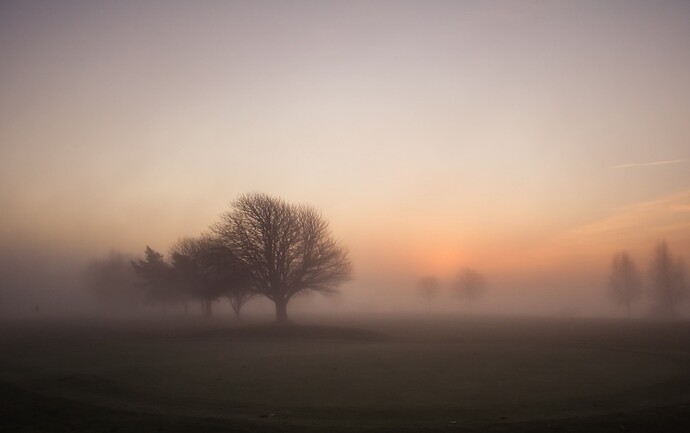I would like to know if the scattering model of light in blender is an exponential model, when I have built a volume fog using volume scattering.
That depends on what you mean by exponential model but generally the Density linearly controls how dense a volume is, which in turn results in exponential decay of the strength of incoming light.
For more information please refer to: Physical units on Volume Scatter and Volume Absorption
Another question is whether there is no atmospheric light item here, as shown in the second half of the formula below (the intensity of light passing through the cube is attenuated, resulting in an overall darker picture). But the actual haze environment, due to scattering, the picture will be white, which leads to the dark channel will not be pitch black.
"so you mean the density in the volume scattering node in blender refers to the attenuation coefficient?" According to brecht, yes.
"the volumetric scatter shader uses the exponential model by default"
I wouldn’t say that it “uses” an exponential model. The exponential decay is rather the consequence of the solution of the differential equation describing the light strength.
It’s the same with radioactive decay.
There are non-exponential volume scattering models, but Cycles (and most renderers) only supports exponential volume scattering.
I’m curious what the use case of a non-exponential fog would be, that exponential wouldn’t also be able to handle. my mind immediately went to large scale fog or atmospherics, but those effects are also exponential, if extremely low. It may be worth it for me to set up a discrete air shader group now that I think about it… it’s a very fiddly thing.
In this paper A radiative transfer framework for non-exponential media | Benedikt Bitterli's Portfolio, it’s mentioned that “[non-exponential media] arise in the presence of correlated scatterers, which are naturally produced by processes such as cloud condensation and fractal-pattern formation” and that “[handling such media] provides a powerful authoring approach where artists can freely design the shape of the attenuation profile separately from the macroscopic heterogeneous density”. Perhaps the video at the bottom of the page is worth seeing, at least the first part to introduce such phenomena up to ~8 min.
just got around to watching it.
fascinating, and makes sense! this would largely explain why scenes like this one display partial scattering and diffusion nature of fog! I tried to replicate it, and found that it was almost impossible to produce diffusion effects in an exponential scattering medium, even with multiple bounces.
I have a feeling that because of how fog works, with dense droplets, light extinction and anisotropy are probably both non-exponential.

